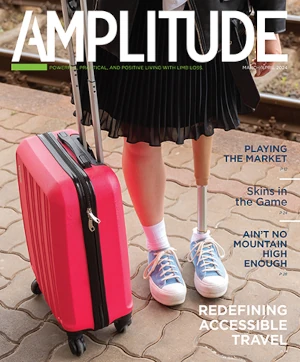
A U.S. Army Marksmanship Unit (USAMU) soldier became the first soldier with a lower-leg amputation to successfully earn his Airborne wings.
Sgt. Joseph Mille, a member of the USAMU Paralympic Team, graduated November 14 from the Basic Airborne Course.
“The primary difficulty was finding a way for Sgt. Mille to conduct a proper parachute landing fall on his prosthetic [right side] without causing injury to himself,” said Marine Sgt. Daniel Lecour, 3rd Platoon airborne instructor, Company B, 1st Battalion, 507th Parachute Infantry Regiment. “We were able to speak with a prior Black Hat [airborne instructor] who had a similar amputation and were able to develop an effective method for Sgt. Mille to conduct a PLF [parachute landing fall].”
Mille explained that in a normal landing the impact is absorbed through the balls of the feet, calves, thighs, buttocks, and back. For his right side, the impact is absorbed through the foot, buttocks, and back.
“Once we figured that out, it was smooth sailing,” he added.
The three-week course trains students to properly conduct parachute operations. The first week, known as Ground Week, focuses on building the individual airborne skills. The individual skills learned during Ground Week are refined during Tower Week, and team skills or the “mass exit” concept is added to the training. During the third week, known as Jump Week, students must successfully complete five parachute jumps at 1,250 feet from a C-130 or C-141 aircraft.
“My first jump was interesting. It wasn’t like the movies, but I knew what to expect from the landing,” Mille said.
Lecour said that having Mille in the course was no different from having any other non-commissioned officer attend.
“Aside from his right side PLF, you could not tell he was an amputee,” Lecour said. “He pulled duties at the company, participated in Airborne physical readiness training, and successfully completed all the company 3.2-mile runs.”
Mille encourages other amputees to try it. “You’ll get plenty of opportunities before you jump out of plane to make sure you’re good to go, so it’s not like ‘here’s your parachute, okay, go.'”
Earlier this year, Mille graduated from the Army Sniper School and has now set his sights on Ranger School and becoming a part of the 75th Ranger Regiment.
“It’s what I originally wanted to do when I joined the Army, but there were no contracts [for Army Rangers] when I enlisted. I’m going to try it out now,” Mille said.
This article is adapted from an original article by Sgt. 1st Class Raymond J. Piper, USAMU Public Affairs.



